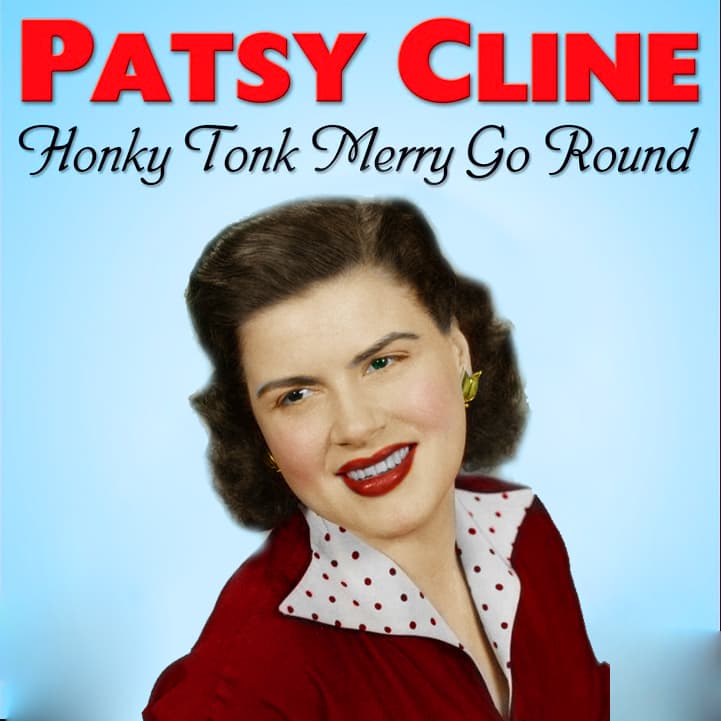
A Whirlwind of Heartbreak and Hope on the Dance Floor
Ah, Patsy Cline. Just the name itself conjures up images of smoky honky-tonks, the clinking of glasses, and a voice that could break your heart and mend it all in the same breath. For those of us who came of age with country music echoing through the airwaves, Patsy wasn’t just a singer; she was an institution, a guiding star in the firmament of American music. And among her early gems, one song often gets overlooked in the shadow of her later, monumental hits, yet it’s a tune that perfectly encapsulates the raw emotion and nascent genius that defined her: “Honky Tonk Merry Go Round.”
Released in 1955, as Patsy Cline was still finding her footing in the male-dominated world of country music, “Honky Tonk Merry Go Round” didn’t soar to the very top of the charts in the way her later classics like “Crazy” or “I Fall to Pieces” would. While exact chart positions from that era can be a bit nebulous and often varied by regional surveys, it certainly didn’t achieve a Top 10 national spot, or even close to it. In those early years, Patsy was a regional sensation, beloved in the burgeoning country music scene, but not yet the household name she would become. Still, for those in the know, for those who frequented the dance halls and listened intently to the local radio stations, this song was a standout, a harbinger of the vocal power that was about to change the landscape of popular music.
The story behind “Honky Tonk Merry Go Round” is less about dramatic personal upheaval and more about the everyday struggle and observations of life in and around the country music circuit. Written by T. Tommy Cutrer and J. D. Miller, it captures a slice of life that was intimately familiar to many in the 1950s. Imagine, if you will, stepping into a dimly lit honky-tonk on a Saturday night. The air is thick with cigarette smoke, the scent of stale beer, and the unmistakable sound of a jukebox or a live band churning out melodies. Couples sway, some lost in their own worlds, others seeking solace or escape. The “merry-go-round” of the title isn’t a literal carnival ride, but a poignant metaphor for the cyclical nature of life, love, and loneliness found within these very walls. It’s the endless dance of hope and disappointment, the fleeting moments of connection, and the lingering ache of separation.
At its core, “Honky Tonk Merry Go Round” is a lament for lost love, a wistful reflection on a relationship that has, much like the dance floor, come full circle, ending where it began – with the singer alone. The lyrics paint a picture of a woman observing the revelry around her, a sharp contrast to her own internal sorrow. She watches others dance, finding fleeting joy, while she’s left with only memories and a sense of longing. It speaks to the universal experience of being surrounded by happiness yet feeling utterly isolated, a sentiment that resonates deeply with anyone who has ever navigated the bittersweet landscape of a broken heart. The “merry-go-round” symbolizes the repetitive cycle of longing and the inability to break free from the past. It’s a beautifully simple yet profoundly effective image, one that evokes both the dizzying nature of infatuation and the inevitable crash back to reality.
What makes Patsy Cline‘s rendition of this song so compelling, even in her early career, is her unparalleled ability to infuse every note with genuine emotion. Even without the full orchestral backing that would characterize her later Nashville Sound recordings, her voice shines through, pure and unadorned. You can hear the ache in her delivery, the subtle tremor that hints at a wellspring of heartache. It’s a performance that, even then, showcased her remarkable control, her ability to bend and shape notes to convey the deepest feelings. For those of us who remember those days, who recall the thrill of hearing Patsy‘s voice for the first time, songs like “Honky Tonk Merry Go Round” were foundational. They were the building blocks of a legend, the early glimpses of a talent that would, tragically, be cut short but never forgotten. Listening to it now, it’s not just a song; it’s a time machine, transporting us back to an era where the music spoke directly to the soul, and a voice like Patsy Cline‘s was a rare and precious gift. It reminds us of a simpler time, perhaps, but one where emotions ran just as deep, and a good country song could always offer a comforting embrace.